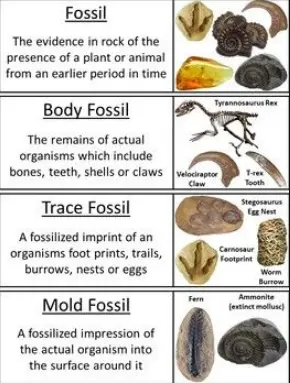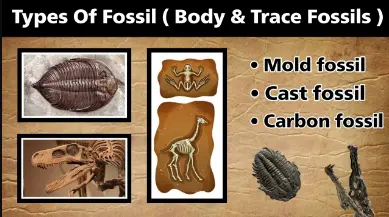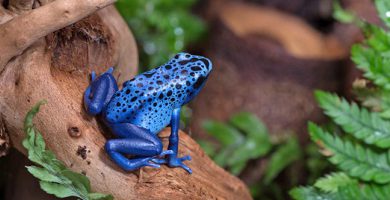Different Types Of Fossils With Pictures And Examples
Fossils are signs of past organisms that survived or remain fossilized or in deposits in the lithosphere. They can undergo deformations in their composition (dynamic metamorphism) or changes in their composition (diagenesis). There are different types of fossils depending on their formation process and their characteristics.

What is a Fossil?
These are the remains of animals or plants preserved from decomposition in nature. They can be found anywhere on the planet, as they are contained in different layers or strata of the earth.
The location of many fossils is still unknown. They are usually sought after by anthropological research, since the remains contain part of the history of the Earth, they can date back to different eras and the processes that have led to their conservation are not always the same.
Furthermore Read Article on What is a Fossil in detail..
How is a fossil formed?
There are many ways to form a fossil are given below:
-
Sedimentation
When an animal dies, sediments bury its remains, especially if it has an exoskeleton that stands the test of time better. The exoskeleton remains unchanged for billions of years if settlement occurs rapidly.
-
Foundry
This method of fossilization forms negative impressions of organisms. They can be external or internal prints. It was this process that made it possible to preserve the shells of various organisms.
-
Mineralization
This happens when a living thing falls into dying water (or dies in it). Organisms that inhabit water consume the body, but not the skeleton. It is preserved with water.
-
Carbonization
Volatile substances such as oxygen and hydrogen are lost after death, leaving a layer of carbon that retains the remains of the body as a trace.
Examples of Fossils

Fossils are the remains or traces of organisms that once lived. In general, four types of fossils are:
Mold Fossil
A fossilized imprint made in a substrate; negative image of the organization.
Molten Fossils
They form when a mold is filled.
Traces of fossils or ichnofossils Fossil
nests, gastroliths, burrows, footprints, etc.
Real-Form Fossils
Fossils of a real-life animal or part of an animal.
Different Types of fossils according to their fossilization process
Depending on the process by which they are formed, they can be:
1. Petrified fossils
Petrification is the process by which organic elements are transformed into rocks. This is because the molecules of the body are replaced by mineral molecules.
A fossil is formed by copying organic elements into rocks or rocks.
2. Frozen fossils
They form when an organism buries itself in ice after the freezing process. Frozen organisms remain unchanged for a long time. This allows scientists to learn more about fossilized animals.
The most famous are the remains of woolly mammoths and giant penguins (up to 1.8 m high. Fossils of tree trunks more than a meter high have also been found in Antarctica.
3. Compressed fossils
These are ones that have been buried in soft material and then covered in a thin layer of sediment.
4. Printed fossils
These are those in which the organism is encased in soft substances such as mud, and then, when this substance hardens, the form of the organism is incorporated.
5. Fossils included
They are all those fossils that form when an organism is trapped in amber, resin, wax, resin and similar substances.
What are different Types of fossils based on their characteristics?

According to their characteristics, fossils can be:
1. Living fossils
These species are very similar to extinct species. This is an informal expression and is not used in science.
It is used to refer to organisms that were only known from fossils until living specimens were found. An example of this is the coelacanth or red panda.
2. Guide or director of fossils
These are fossils belonging to extinct organisms. They are very important and make it possible to date ancient layers. They are used in biochronology and biostratigraphy to determine the age of fossils.
3. Problematic fossils
These are those which, from their condition, are difficult to assign to the various known classes, subclasses and orders of plants or animals.
4. Subfossils
These are those who, for various reasons, for example, due to lack of time or due to the burial method, have not completed the petrification process. Most of the subfossils are generally from the Quaternary period, pre-Mesozoic subfossil finds are very rare.
5. Pseudo fossils
These are the ones that look organic but aren’t.
6. Chemical fossils
These are molecules found in oil or sediment that are part of the chemical compounds used today, such as fossil fuels.
They also make it possible to distinguish between marine and freshwater environments.
Suggested Articles:


